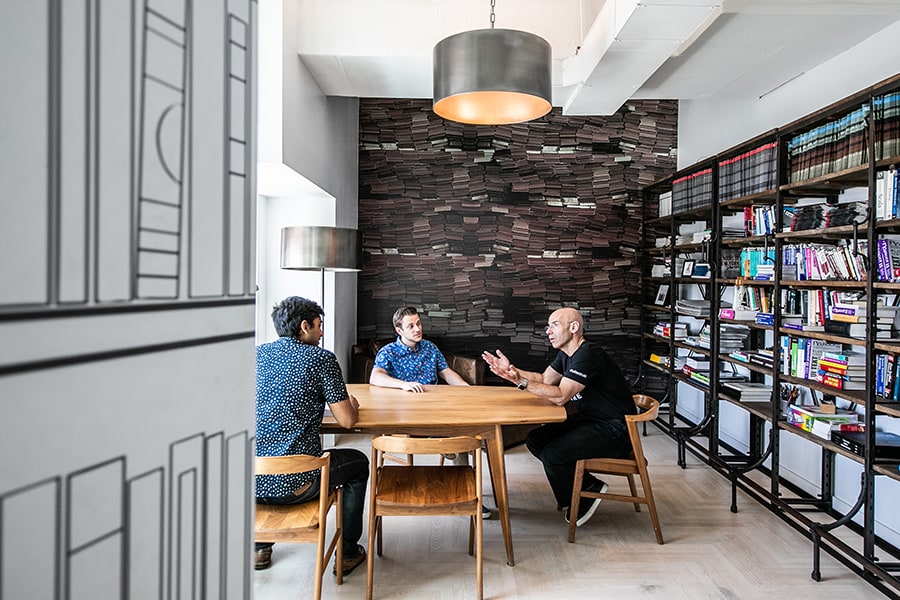
Need space at work? Just say 'Open Sesame'
Secret office rooms help a company generate "buzz" about their workplaces, which helps with staff recruitment and retention, and might also be part of the pushback against open plans
 Inside a secret library room, with bookshelves modeled on those found in libraries in the 1940s, at Shutterstock in New York, Aug. 9, 2019. Secret rooms are popping up in workplaces
Inside a secret library room, with bookshelves modeled on those found in libraries in the 1940s, at Shutterstock in New York, Aug. 9, 2019. Secret rooms are popping up in workplacesImage: Jeenah Moon/The New York Times
Transparency is one of the biggest trends in modern office design: open floor plans, fewer offices, glass walls and doors. And at a time when #MeToo has called attention to the sordid things that can happen behind closed doors, there may be some comfort in having everything, and everyone, within view.
But a taste for hidden places still runs deep.
They have appeared throughout history, from secret passageways in medieval castles to Prohibition-era speak-easies. Secret rooms are now popping up in workplaces and other commercial settings, providing the thrill of seeing a room materialize unexpectedly, not to mention the appeal of hanging out in a space reserved for VIPs.
“They add a moment of discovery in a workplace — a surprise for employees and visitors,” said Samantha McCormack, a creative director at TPG Architecture, which has tucked secret rooms into clients’ offices. “There’s a coolness and playfulness factor.”
Bookcases can swing wide in an open-sesame trick. At the Los Angeles office of marketing company Weber Shandwick, TPG designed a wall-to-wall bookcase with a section that can be pushed in, providing access to a steampunk-style room devoted to quiet work. At Maison de la Luz, a boutique hotel in New Orleans, guests enter a private salon through a bookcase. Google has a private reading area hidden behind a bookcase at its East Coast headquarters in New York.
Secret rooms help a company generate “buzz” about their workplaces, which helps with staff recruitment and retention, said David Ballard, director of the American Psychological Association’s office of applied psychology
©2019 New York Times News Service




